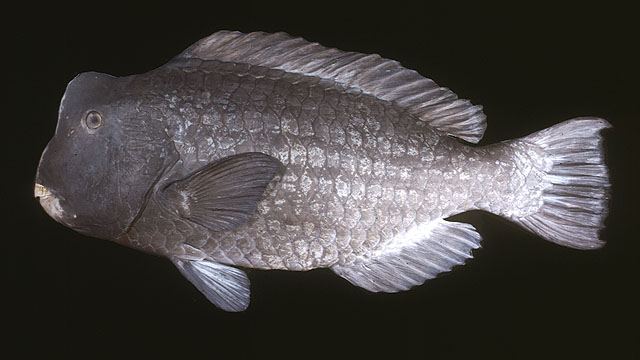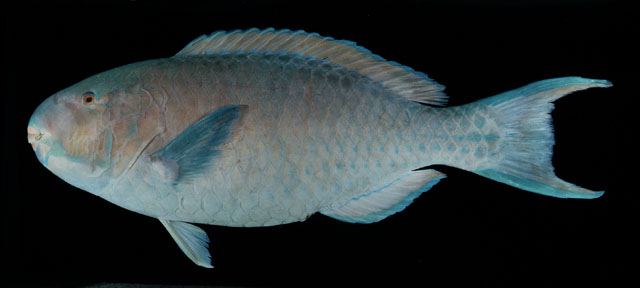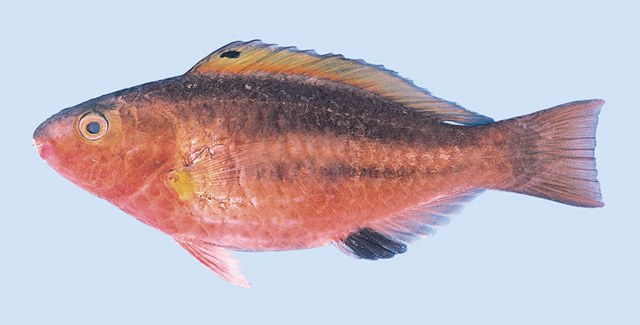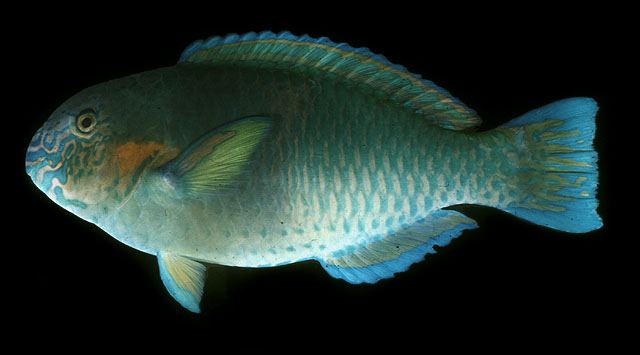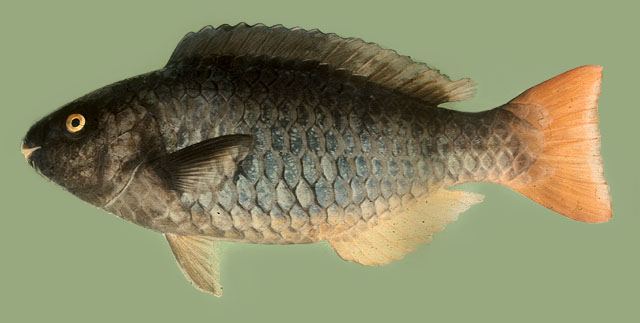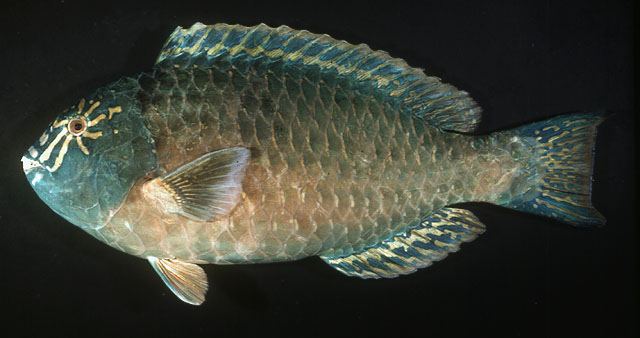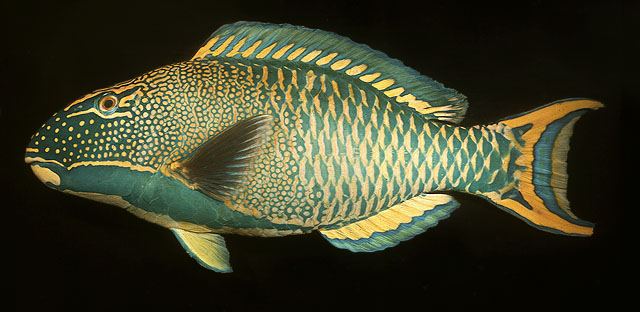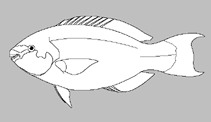
Chiefly tropical. Distribution: Atlantic, Indian, and Pacific Oceans. Jaw teeth fused or parrotlike. Spines in dorsal fin 9; soft rays 10. Three spines in anal fin; soft rays 9. One spine in pelvic; soft rays 5. Caudal fin with 11 branched rays. Scales large; cycloid. Lateral line with usually 22-24 scales. Vertebrae 25. Herbivorous, usually scraping algae from dead coral substrates. Bits of rock eaten with the algae are crushed into sand and ground with the algae to aid in digestion, making parrotfish some of the most important producers of sand on coral reefs. At night, some species rest enveloped in their mucoid secretion. Sex change seems a common occurrence, with an initial phase (IP) of both males and females, and the latter changing into a brilliantly colored male terminal phase (TP). Terminal males dominate several females; pelagic spawners. Many species could be identified by their live coloration but this may be lost in preservation, or can vary between juveniles and adults and with sex change. Important food fishes. Difficult to maintain in aquaria as the fused teeth need to constantly graze dead coral rock in order to keep from growing too long.


